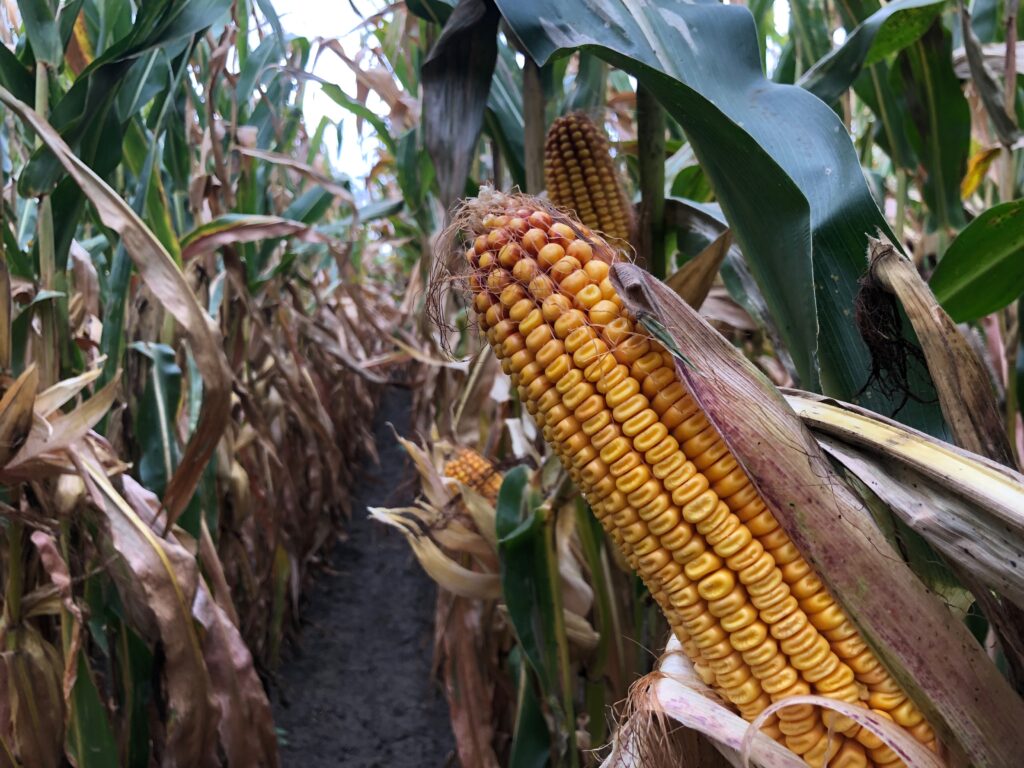I’d like to tell you that I’m writing this from the cab of my combine, but a week of grey, gloomy and wet weather has essentially stopped soybean harvest for your loyal scribe. Sometimes it can be maddeningly frustrating this time of year with grey weather, but hopefully things will break soon. Soybean pods don’t like to snap and open when it’s drizzly and gloomy and wet. Every year is different and here we are.
Weather risk is a constant farmers face no matter where they are. For instance, farmers in Brazil have had it too dry in the north and two wet in the South for planting and then there is of course everything in between. Markets are continually responding to this type of stimuli, but of course we are continually wondering what grain prices are will do.
The futures markets are what they are, an indication of what traders think might be happening in the future. Generally speaking, things have been bearish, but maybe we have reached seasonal bottoms.  There might be much more to look forward to. For instance, nearby soybean futures have rebounded from about the $12.50 level to about $13.11 at the start of the trading day today. December corn futures are up about $0.20 in the last month. The question is, what happens next?
For Ontario and Quebec farmers that is the quintessential question that I get. In fact, last week I got a call from a great grandmother asking me when she should sell her soybeans. I hope that she caught that 60-cent appreciation in the soybean price at the time I talked with her although I felt that her life wouldn’t change much no matter when she sold the soybeans.  For those of us who have hundreds and thousands of acres, it’s much more of an intricate balance.
Prices are lower than a year ago in fact they are lower than the last two years, but they are still higher than we have become accustomed to before that. Yes, we have had higher costs but most of us including your loyal scribe have the hard-wired bias in our brain that we never like selling less than last year. It never sits right to sell for less.
Who knows what that will be for 2024 and 2025? I am not of the camp to chastise people by looking back at past prices. The road is littered with analysts who think they knew what was going to happen, but of course nobody knows.
What we can do is try to measure all the different marketing factors especially when it comes to our cash markets. For instance, in Quebec and Ontario there are distinguishing features of our cash market that operates in a vacuum. In other words, there are grain merchandisers who know the circumstances of supply and demand in Ontario and Quebec, but this information is not publicly available. I understand this because these private firms do not want to divulge your marketing position in a competitive environment.
It makes it almost impossible or the ordinary farmer to get a good gauge of the Ontario and Quebec supply and demand for cash grain on any particular year 2023 and 2024 are no different. For instance, how transparent is your cash price for grain in southeastern Quebec versus southeastern Ontario versus southwestern Ontario and beyond? It’s all related, but at the same time it’s all different with many market sources weighing in.
A good gauge in the cash market is the degree of farmers selling during a given period. For instance, how much grain will be sold at harvest time this year in Ontario, both corn and soybeans? That figure is known within the confines of the different grain marketing companies versus past years, but it’s not again for public consumption. Needless to say, it would be a significant factor in the movement of the basis in Ontario and Quebec.
As it is, we do you know we try to utilize as much grain domestically as we can, but at the end of the day we have to export out of Ontario and Quebec. This puts us in competition with grain on the high seas with soybeans coming out of Paranagua Brazil or the US gulf. We also have US grain which can cross our land border at any time. US wheat could be included in this. Once, to my knowledge, there was Brazilian soybeans land in Three Rivers Quebec.
Is there a better way to know what’s going on in the cash grain market for farmers? After years of examining, it I don’t think so, even though I believe our grain prices today are more transparent than they used to be. For instance, cash grain basis says everything about grain movement that is bought and sold.  Take the foreign exchange out of it and a study of US grain basis helps. However, even that understanding tells us why cash grain is sold in the past versus what may happen in the future. For farmers in Ontario and Quebec it will continually be our marketing challenge.
I didn’t mention the Canadian dollar, because as readers of this column, you know what that means. Aside from that, let’s just recognize that our grain price transparency will continue to be a bit and only a bit of an enigma. The more marketing information we can devour on the cash market and the more daily intelligence that we can consume is always better.
